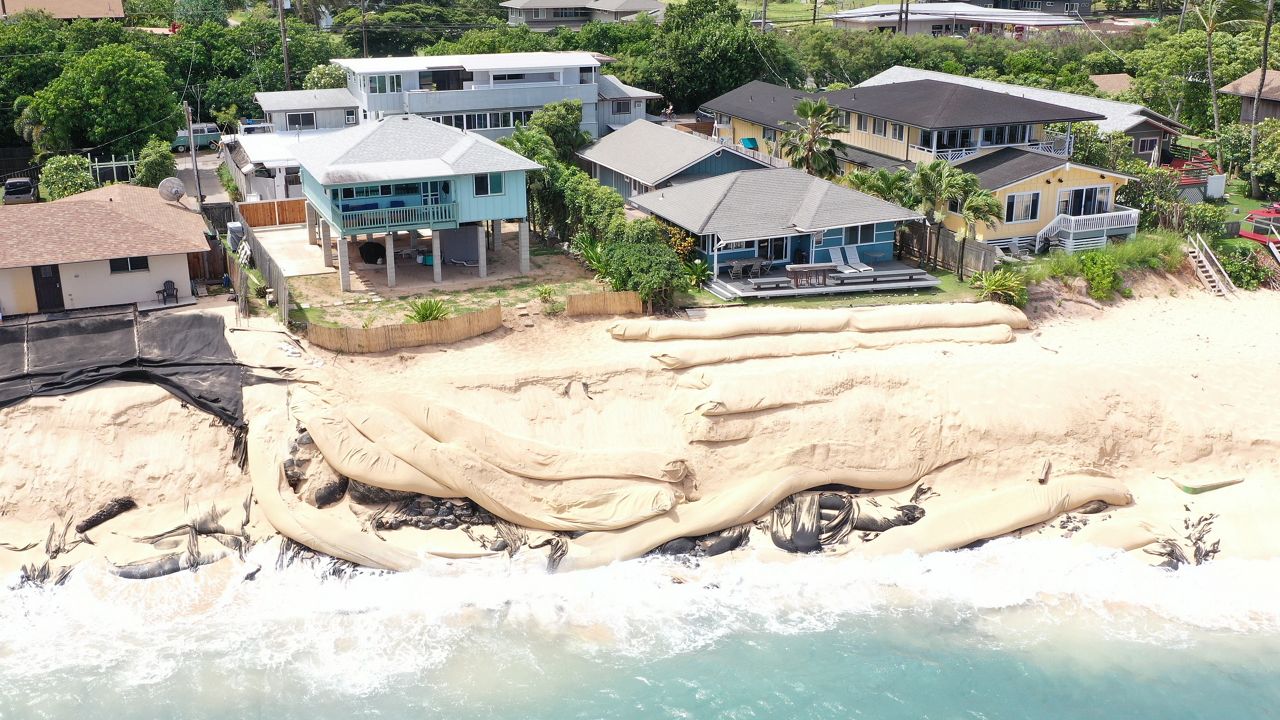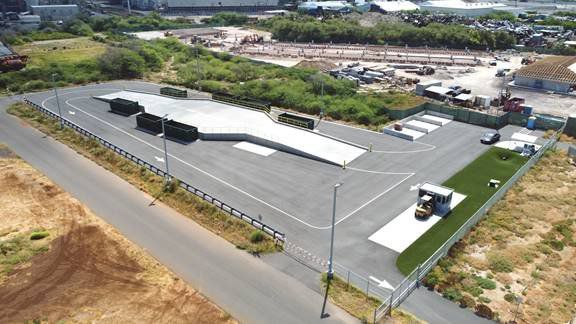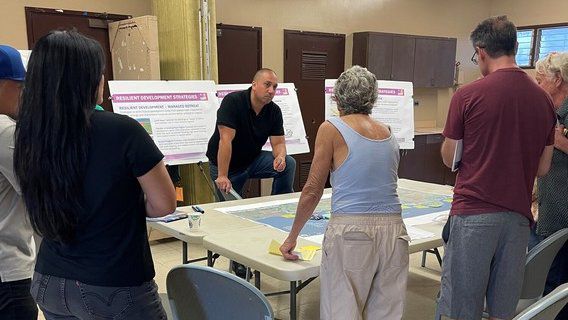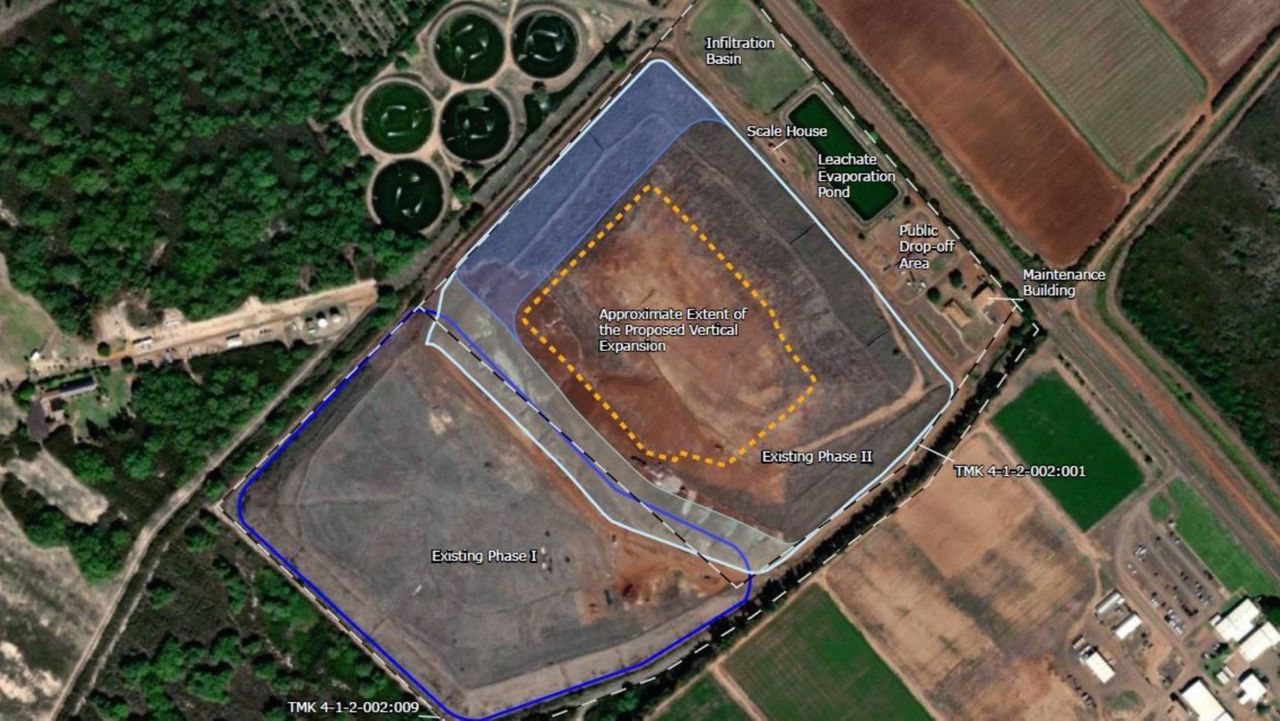Editor's note: This article is part of a series of end-of-year roundups that Spectrum News Hawaii will publish during the month of December. We hope you enjoy these reflections on local news in 2024.
Throughout the year, Spectrum News Hawaii has been covering news about coastal erosion impacting oceanfront homes as sea levels rise. While state authorities issue fines to property owners for unauthorized armoring along the coast, the Pacific Ocean continues to eat away at the shoreline and these precariously situated properties continue to shrink. From $1 million fines to homes collapsing into the ocean, here’s a look back at some of the biggest stories.
1. Sunset Beach homeowners fined $1 million for building structures on the shoreline
The Board of Land and Natural Resources fined two North Shore properties, both at Sunset Beach, nearly $1 million each for unauthorized work on the shoreline meant to protect their properties from beach erosion.
According to a DLNR news release from Jan. 12, “the board offered to offset the fines if the homeowners agreed to remove residences from their shoreline properties, and erosion control structures from state land.” The costs to remove the structures could be used to reduce the fines.
William and Melinda Kernot and Sunset Oasis LLC, who own the property at 59-151 A Ke Nui Road, were fined a total of $948,000 for unauthorized work on public lands within the State Land Use Conservation District. The DLNR Office of Conservation and Coastal Lands said the Kernots had been told to stop work at least three times, but despite this, the unauthorized work continued. BLNR fined the Kernots $15,000 for installing a sand-filled burrito system; $15,000 for failing to remove temporary erosion control structures; and $45,000 for continuing to work for three days after receiving notice to stop all work. The largest fine — $873,000 — was an accumulation, $1,000 per day, for failure to remove encroachments on public land after receiving notice on July 18, 2021.
Rodney Youman and Zhungo LLC, who own 59-149 Ke Nui Road, were fined a total of $993,000. Records show Youman purchased his property in 2016 for $1.6 million. OCCL said Youman continued unauthorized work after receiving notification to stop on at least four occasions between Sept. 2020 and Sept. 2022. BLNR fined Youman $15,000 for constructing a seawall within the conservation district; $15,000 for placing rocks to create an unauthorized retaining wall; and $15,000 for not removing the temporary erosion control measure after the authorization period expired. Similar to the Kernots, Youman’s largest fine, $873,000, was for failure to remove encroachments on public land after receiving notice on July 18, 2021.
Both the Kernots and Youman have requested Contested Case hearings.
The OCCL said in its submittal to the BLNR that beach erosion on Oahu’s North Shore around Sunset Beach has intensified significantly over the last few years, which they said was likely a cause of acceleration in sea level rise. Seawalls and other enforcement measures “protect private land mauka of the armoring device, while harming the public trust resources makai of the wall,” the OCCL said.
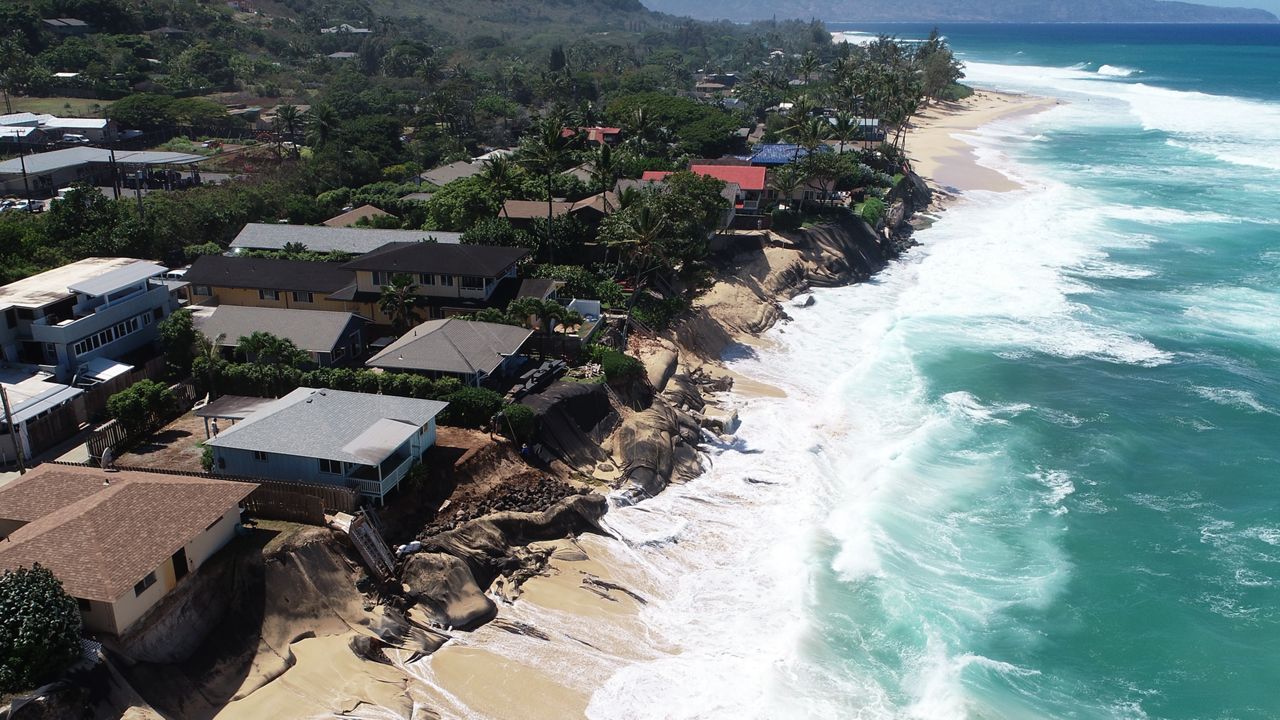
2. A Kahala property is collapsing into the ocean and the owner may face steep fines
A corporation that owns a property in Kahala, which is falling into the ocean, is facing up to $100,000 in fines if they do not remove all items from the shoreline by Aug. 7, 2024.
The Honolulu Department of Planning and Permitting and the DLNR Land Division and Office of Conservation and Coastal Lands received complaints that portions of the property at 4623 Kahala Avenue had eroded and structures were encroaching on the beach, according to a news release.
The city and state conducted a joint investigation because of jurisdictional questions of the location of the structures on private versus public lands. An inspection revealed that a fence and alleged unauthorized erosion control devices that used to be on the edge of the property had collapsed into the ocean.
DLNR has sent state Conservation District enforcement-related notices to the landowner, Asagami Corporation, chaired by Tomomi Kimura, since Aug. 2005.
A DLNR notice of alleged violation sent on June 7, 2024, said the collapsed fence had been modified and was being used as part of an alleged unauthorized erosion control device along with sandbags and other materials.
State law stipulates that it is illegal to obstruct access to the shoreline and erosion control is a regulated land use.
DLNR told the landowner to remove the structures on the shoreline area within 21 days. If the landowner does not comply, they would face an initial fine up to $100,000 and daily fines of up to $10,000 until the violations are corrected. The Board of Land and Natural Resources could also take actions to remove the encroachments.
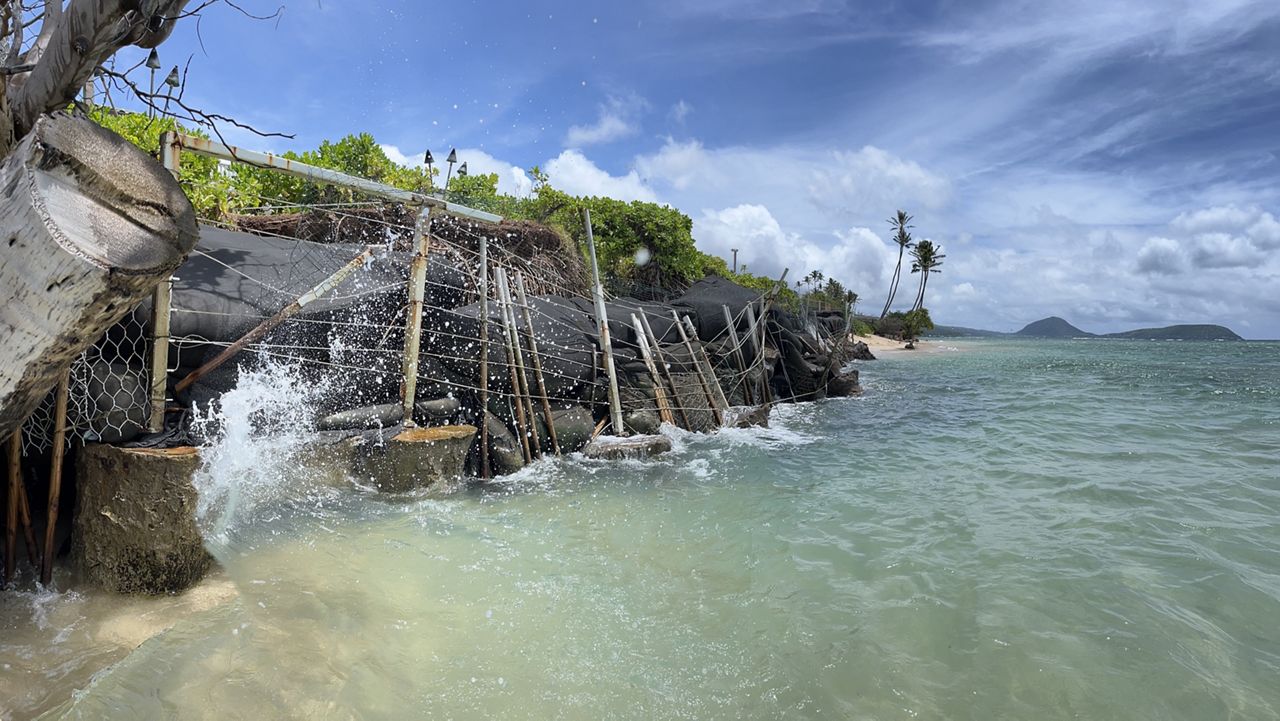
3. State seeks payment for removing debris from the beach after North Shore property collapses
A beachfront home at Rocky Point on Oahu’s North Shore partially collapsed onto the sandy shoreline in September as waves washed up the beach. Parts of the home also swept into the ocean.
The following day, the attorney general filed a complaint asking the First Circuit Court on Oahu to award damages to the state for removing unauthorized erosion control measures and debris and restoring the natural resources. The state is also pursuing a temporary restraining order against the property owner, Joshua VanEmmerik, according to a news release.
The state owns the land up to the highest wash of the waves, while the Department of Land and Natural Resources has jurisdiction over land makai of the shoreline. The area in front of the home, at 59-147 Ke Nui Road, is part of the state conservation district.
On Tuesday, after the home collapsed, DLNR staff went to the site, where they saw large pieces of cement, wood, glass, electrical components, rebar and geotextile fabric covering the state land between the property boundary line and the ocean.
“The state has a duty to protect the environment, prevent further degradation of state conservation land, and ensure shoreline and beach preservation for future generations,” said Attorney General Anne Lopez in a statement.
“Private landowners take a risk when they allow structures to be so close to the shoreline,” said Deputy Attorney General Danica Swenson, who is the lead attorney for the state on the case. “The people of Hawaii are now confronted with the consequences of property owners’ failures to take heed of the ocean’s warning signs of erosion.”
DLNR’s Office of Conservation and Coastal Lands is coordinating with the City and County Department of Parks and Recreation to remove the debris from the shoreline.
For more on 59-147 Ke Nui Road, read this follow-up article: Court approves state request for a restraining order against North Shore property owner
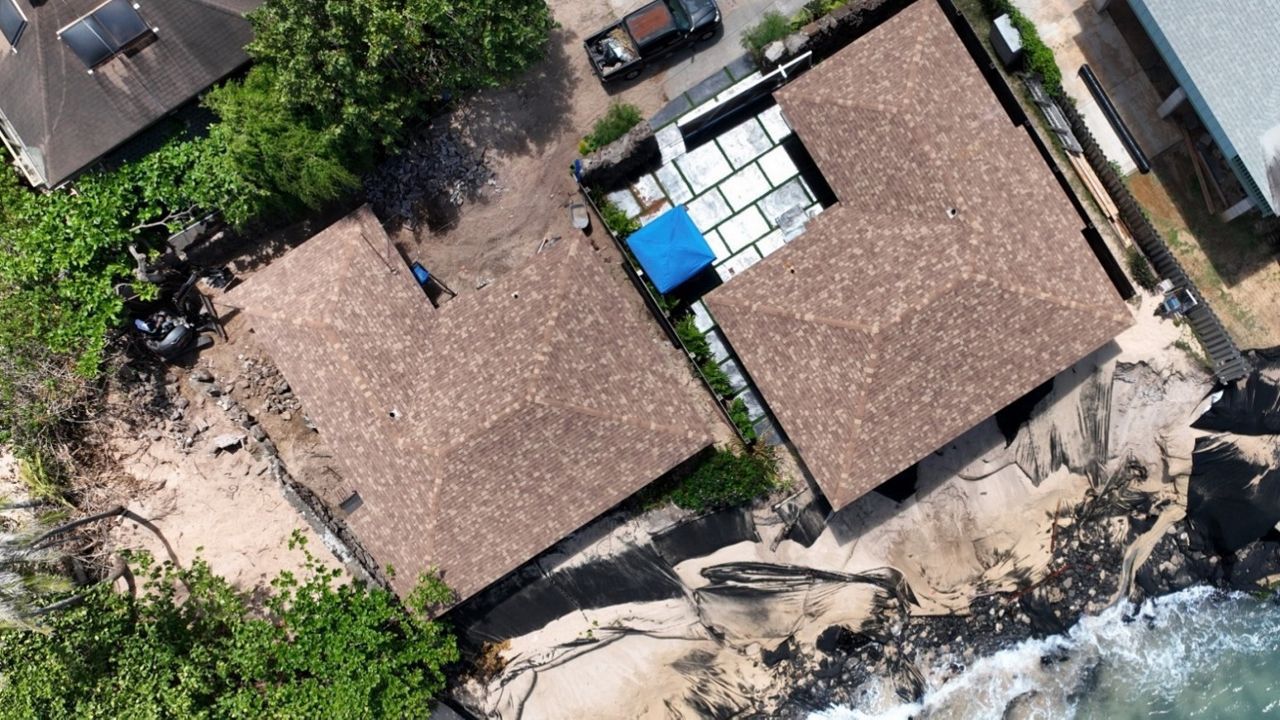
4. Legal expert: Beachfront property owners have no recourse if sea levels rise
As the powerful Pacific Ocean eats away at the shoreline all around the state, shrinking the square footage of oceanfront properties and sometimes taking away parts of the homes, the owners have few options.
In September, a beachfront home at Rocky Point on Oahu’s North Shore partially collapsed into the ocean. Pieces of the home and erosion control measures that were placed on the beach in front of the property littered the sand and ocean.
But state officials had little sympathy for the property owner, Joshua VanEmmerik, who over the past four years had been sent multiple violation notices for allegedly building unpermitted erosion control devices on the beach in front of the property and had been asked to work with the City and County of Honolulu’s Department of Permit and Planning to relocate his home.
On Sept. 27, the state sued the property owner, demanding damages to pay for the cleanup.
The state’s Department of Land and Natural Resources also closed the beach in front of the home, citing safety concerns. Crews put up signs informing visitors and residents of the closure.
DLNR subsequently sent a news release alerting homeowners in the Ke Nui Road area of the potential risk to property as many of the homes are built on sand berms and waves continue to cause erosion.
“While the circumstances are unfortunate, debris on the public beach or falling into the ocean endangering the community and marine life is unacceptable and we will take all appropriate action to protect the public and our natural and cultural resources,” said DLNR Chair Dawn Chang.
In 2022, another home, at 59-181-H Ke Nui Rd, collapsed onto the beach. If nothing is done, more homes are likely to follow.
Michael Cain, the administrator of DLNR’s Office of Conservation and Coastal Lands, urged homeowners to relocate any parts of a home that are at risk of falling into the ocean and encouraged them to work with DPP to determine what permits might be needed.
“The situation is not good for homeowners,” said David Callies, a University of Hawaii Professor of Law Emeritus who specializes in property, in an interview with Spectrum News Hawaii.
Callies noted many of the lots along Ke Nui Road are relatively small, with little room to move homes mauka.
“There's not sufficient land legally to construct a new house when the house falls down,” said Callies.
According to Hawaii law, the state owns the land up to the “highest wash of the waves.” As climate change leads to rising sea levels and naturally fluctuating coastlines shift, waves may encroach on the boundaries of properties that have been in place for decades.
VanEmmerik’s home was built in 1979 and when he purchased the home in Dec. 2021 for more than $1 million, the lot size was listed at 5,169 square feet, according to public records.
While a home may be listed at 5,169 square feet, if “the highest wash of the waves” gets higher, then the lot size will shrink accordingly — with no certain stopping point.
“The landowner really continues to lose property. And there is no legal remedy for that,” said Callies. “It’s sort of like collateral damage.”
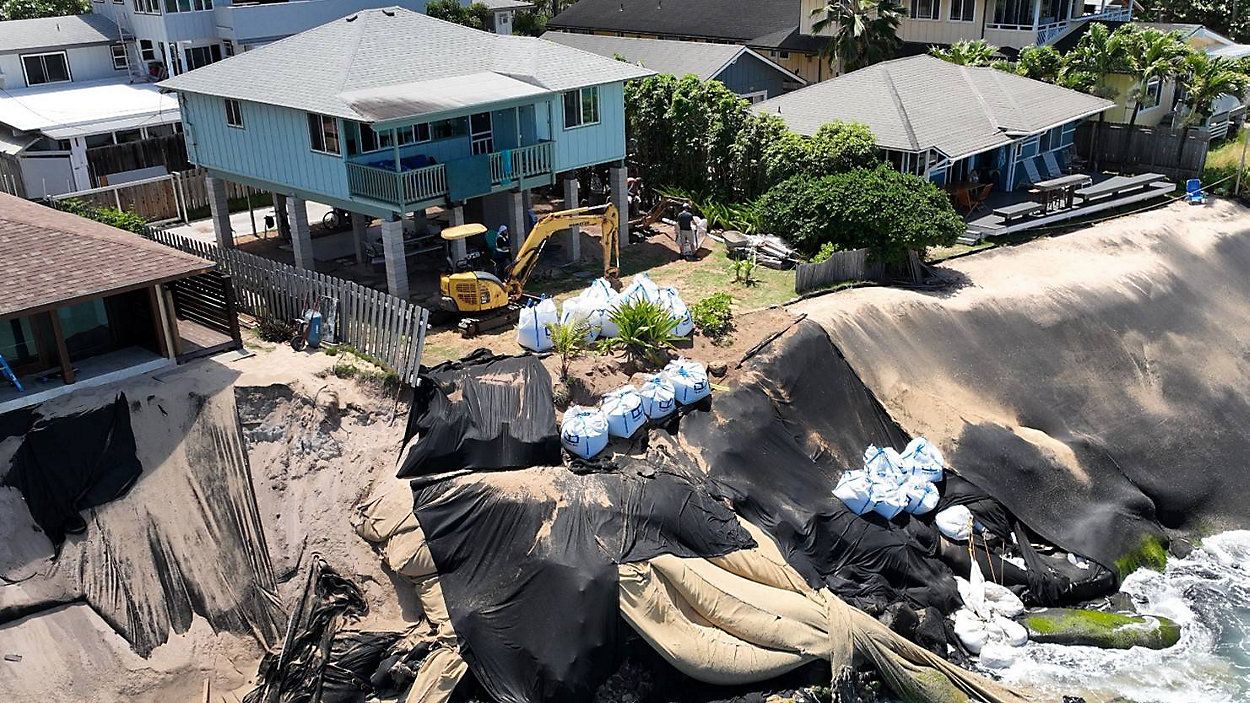
Michelle Broder Van Dyke covers the Hawaiian Islands for Spectrum News Hawaii. Email her at michelle.brodervandyke@charter.com.




